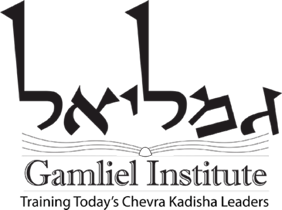Engaging Clergy
Clergy in Death Education
The natural roles of the clergy in synagogue and community life are varied and cover the spectrum of religious living. Clergy may act in any or all of the following capacities:
- Leader of prayer services and life cycle events
- Educator at religious services, events, and classes
- Coordinator of synagogue events, social action, and interfaith programming
- Provider of personal counseling and pastoral care
- Author, editor, and teacher of Jewish sources, texts, and books
Clergy become natural allies in the quest to educate the Jewish community about Jewish end-of-life practices, rituals, and traditions, including history, text sources, and modern day applications. They can play an essential role as promoters of the Chevrah Kadisha, informing congregants about the services that the chevrah provides, especially taharah and shmirah, encouraging Jewish funeral and burial practices, as well as personally participating when possible in taharah and shmirah. They are in a unique position with an influential platform through which they can educate and mobilize the community. Because of this, and because of their status as teachers in the larger community, it is essential that clergy take a leading role in end-of-life education programs.
Some clergy do not have a background in Chevrah Kadisha work or the details of Jewish end-of-life practices, so it may be necessary to provide inspiring and detailed education to clergy members before they can become beacons to the community in this arena. Supporting their attendance at a North American Chevrah Kadisha and Jewish Cemetery Conference or participation in Gamliel Institute courses (especially those designed for clergy) may be very effective ways to do this.
In addition, as noted on the Educational Approaches page, clergy can play central roles in community educational events such as panels of rabbis addressing end-of-life practices and individual synagogue evening programs on end-of-life education, and by giving drashot about Chevrah Kadisha and Jewish practice at the end of life.
Clergy and Taharah and Shmirah
One of the most effective ways to educate and inspire clergy about Jewish death practice is for them to have them be part of the Chevrah Kadisha, to participate in shmirah and taharah, and to thereby personally and intimately understand the depth and power of our traditions.
Clergy do not have to be roshim (taharah ritual leaders), but they can be. More often than not, they offer to be in charge of reading the liturgy in Hebrew, as some chevrah members cannot read Hebrew as fluently. However they are involved, their presence is always appreciated, shows support for this holy work, and uplifts everyone involved.
Once involved in chevrah work, clergy are better prepared to be teachers and educators of Jewish end-of-life practices. They can share personal stories, they can answer questions with personal authority, and they can interpret liturgy. They can also provide opinions about policy and procedure from a religious perspective. Their participation also gives them inspiration and knowledge to use when developing drashot about Jewish end-of-life practice for services throughout the year.
Thus, encouraging local clergy to participate in the Chevrah Kadisha is a high priority when implementing a Jewish end-of-life educational program.
Respectful Conversations
Most people do not discuss wishes or routinely make plans for end-of-life care. Many people do not engage in these conversations with their clergy — or even with loved ones — before a crisis arises. It is important to use congregational settings to encourage and begin these conversations.
One effective way to include clergy in education is to utilize their experience and expertise in helping congregants to enter into conversations about death.
Sermons, programs, and pastoral practices that encourage and support values-based conversations about end-of-life wishes will set the stage for congregants to have those crucial conversations, and will help them make crucial decisions in advance. Congregants who are well prepared and have some experience in having these conversations will become stronger, compassionate advocates for themselves and their loved ones about the kind of care they want to receive—and don’t want to receive–in the health care system.
This approach will help support you and your team in thinking systematically about the kinds of changes you can help implement within your community to improve the likelihood that congregants will have these conversations, make decisions, designate a health care agent, and commit their plans to writing. Developing an outline for plans for such changes will facilitate communication among team members and the wider congregation, including staff and board members. Together, you will have greater clarity about what changes to make and how they affect your community. Having a clear plan will also help you determine whether your efforts were helpful in reaching your aims.
Here are seven categories of actions and principles that are practiced in many congregations:
Actions we should take are:
- Study Jewish texts, literature, past practice, and current implementation of approaches to end-of-life decisions.
- Engage with congregants to help interpret Jewish principles and practices and to understand what matters most to them at the end of life.
- Infuse this information through all aspects of congregational work, paying particular attention to those who are isolated and vulnerable.
- Guide individuals and families as they have the Conversation and make decisions.
These actions should be taken while maintaining the following principles:
- Respect and observe, to the best of our ability, our congregant’s wishes for care, comfort, and tradition at the end of life.
- Exemplify this work in our own lives, so that we can both fully understand the benefits and challenges and also serve as examples.
- Connect with individuals, their loved ones, and health care providers in a spiritually, culturally, and individually respectful manner.

